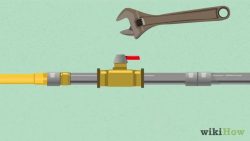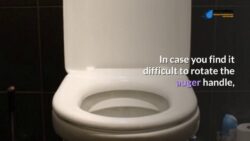In today’s article, you will discover straightforward and effective methods to unblock a kitchen sink equipped with a garbage disposal. Kitchen sink blockages can be a hassle, especially when they involve a garbage disposal. However, with a few simple steps, you can unclog your sink and get back to enjoying a fully functional kitchen in no time. By following these easy techniques, you can eliminate stubborn clogs and prevent future blockages, ensuring smooth drainage and a clean sink. So let’s delve into the simple steps to unblock a kitchen sink with a garbage disposal.
Check for Obvious Blockages
Before attempting any unclogging methods, it’s important to start by checking for any obvious blockages in your kitchen sink with a garbage disposal. You can do this by simply looking into the sink and visually inspecting if there are any large food particles, utensils, or other objects that might be causing the clog. If you spot any visible blockages, make sure to remove them carefully using tongs or gloves.
Turn off the Power
For your safety, it is crucial to turn off the power to the garbage disposal unit before attempting any unclogging methods. This can be done by either unplugging the unit from the electrical outlet or by switching off the respective circuit breaker in your electrical panel. It is important to take this precautionary measure to avoid any accidental injuries while working on the clogged sink.
Remove Standing Water
If there is standing water in your sink due to the clog, it is necessary to remove it before proceeding with any unclogging methods. Use a bucket or a large container to scoop out the water and dispose of it properly. This step will enable you to have better access to the drain, making it easier to effectively unclog the kitchen sink.
Attempt Plunging
Plunging is a common and effective method to unclog a kitchen sink with a garbage disposal. This method utilizes the power of suction to dislodge the clog and restore the normal flow of water. There are specific steps to follow when using a plunger for unclogging a sink.
Using a Plunger
Start by placing the rubber cup of the plunger over the drain opening. Ensure that it completely covers the opening and creates a tight seal. Hold the plunger firmly, making sure it is in an upright position. Apply firm and steady pressure while rhythmically pushing and pulling the handle of the plunger up and down for about 10-15 times. Once you’ve done this, quickly pull the plunger off the drain to break the seal and check if the water starts to flow freely down the drain.
Sealing the Drain Opening
If the plunging method doesn’t work, you can try sealing the drain opening with the plunger to create a stronger suction. This can be done by covering the overflow opening of the sink with a wet cloth or by using duct tape to block it. By blocking the overflow opening, you are ensuring that the air is forced down the drain, increasing the pressure and potentially dislodging the clog.
Clean the P-Trap
If plunging doesn’t solve the issue, it’s time to move on to cleaning the P-trap. The P-trap is a curved pipe located beneath the sink that traps debris and prevents it from entering the main drain. Over time, the P-trap can become clogged with food particles, grease, or other materials, resulting in a blocked kitchen sink. Cleaning the P-trap can often resolve such clogs.
Gather Necessary Tools and Supplies
Before you begin cleaning the P-trap, gather the necessary tools and supplies. You will need a bucket to collect water and debris, a pair of adjustable pliers to loosen and remove the pipes, and a small brush or sponge to clean the P-trap.
Place a Bucket under the P-Trap
Position a bucket beneath the P-trap to catch any water or debris that may spill out during the cleaning process. This will help prevent any mess and make it easier to dispose of the collected materials later on.
Loosen and Remove the P-Trap
Using the adjustable pliers, carefully loosen the nuts on both ends of the P-trap. Once loose, you should be able to remove the P-trap by hand. Be cautious as there may still be water and debris inside the P-trap, so keep the bucket handy to avoid any spills.
Clean the P-Trap
Once the P-trap is removed, inspect it for any visible blockages. Use a small brush or sponge to scrub away any accumulated debris, grease, or gunk from the inside of the P-trap. Make sure to clean it thoroughly to ensure optimal flow through the pipe.
Reinstall the P-Trap
After cleaning the P-trap, carefully reinstall it by hand. Use the adjustable pliers to securely tighten the nuts on both ends of the P-trap. Ensure they are tightened enough to prevent any leaks but be careful not to overtighten and damage the pipes. Once the P-trap is securely in place, check if the water flows freely down the drain. If the clog persists, move on to the next method.
Use a Plumbing Snake
If previous methods haven’t resolved the clog, using a plumbing snake can be another effective technique to unclog a kitchen sink with a garbage disposal. A plumbing snake, also known as a drain auger, is a long, flexible metal coil that can be inserted into the drain to break up or retrieve the clog.
Choose the Right Snake
There are a variety of plumbing snakes available in the market, so it’s important to choose the one that is suitable for your specific needs. Opt for a snake that is long enough to reach the clog in your kitchen sink but not overly long that it becomes difficult to handle. Additionally, consider a snake with a bulb or claw at the end, as this can help grasp and remove the clog more effectively.
Insert the Snake into the Drain
Start by inserting the end of the plumbing snake into the drain opening of your kitchen sink. Gently push the snake into the drain and continue feeding it in until you feel resistance. This resistance indicates that the snake has reached the clog.
Rotate and Push the Snake
Once the plumbing snake has reached the clog, you need to rotate and push it further to break up or dislodge the clog. Use a clockwise motion to rotate the snake while simultaneously pushing it deeper into the drain. This action helps to break through the clog and create a pathway for the water to flow freely.
Retrieve the Snake
After rotating and pushing the snake, slowly retract it from the drain. The resistance you feel during retrieval is typically due to the clog being dislodged or broken up. As you remove the snake, any debris or residue attached to it should be pulled out with it. Discard the debris properly and check if the sink drains properly. If not, you may need to repeat the process or explore other methods..
Utilize a Bent Wire Hanger
If you don’t have access to a plumbing snake, a bent wire hanger can serve as a makeshift tool to unclog your kitchen sink. This method is particularly useful for extracting clogs that are closer to the surface or comprised of softer materials.
Straighten the Wire Hanger
Start by obtaining a wire hanger and straightening it as much as possible. Use caution while doing this to avoid injuring yourself or causing damage to the sink or pipes.
Create a Hook at the End
Once the wire hanger is straightened, bend one end of it to create a small hook. The hook will help you catch and retrieve the clog from the drain.
Insert the Wire into the Drain
Carefully insert the hooked end of the wire hanger into the drain opening. Gently wiggle and maneuver it inside the drain, trying to hook onto any clogs or debris obstructing the flow.
Wiggle and Retrieve the Debris
Once you have hooked onto the clog, gently wiggle and twist the wire hanger to dislodge it or break it apart. With every movement, try to pull the clog towards the drain opening. Once the clog is loose, carefully remove the wire hanger from the drain and properly dispose of the extracted debris. Test the sink to ensure it is draining properly. If not, you may need to repeat the process or explore other methods.
Use an Enzyme-based Drain Cleaner
If the aforementioned methods haven’t been successful, you can consider using an enzyme-based drain cleaner to tackle the clog in your kitchen sink with a garbage disposal. Enzyme drain cleaners are designed to break down organic materials, such as food particles and grease, by using naturally occurring enzymes and bacteria.
Purchase a Suitable Enzyme Drain Cleaner
Head to your local hardware store or home improvement center and look for a suitable enzyme-based drain cleaner. Make sure to read the labels and choose a product that is specifically formulated for kitchen sink clogs and safe to use with a garbage disposal.
Follow the Instructions on the Product
Once you have the enzyme drain cleaner, carefully read and follow the instructions provided on the packaging. Different products may have specific usage guidelines, so it’s important to adhere to them for optimal results and safety.
Wait and Flush the Drain
After applying the enzyme-based drain cleaner, allow sufficient time for the product to work. Typically, you’ll need to wait for a specified duration mentioned on the packaging. Once the waiting time has elapsed, flush the drain with hot water to wash away any remaining debris and clear the clog. Check if the sink is draining properly and repeat the process if necessary.
Consult a Professional
If all else fails and you’re unable to unclog your kitchen sink with a garbage disposal, it may be time to consult a professional plumber. Plumbers have the necessary expertise, tools, and experience to identify and resolve even the most stubborn clogs. They can assess the situation and provide you with the best course of action to ensure your kitchen sink is back to its optimal functioning.
Tips and Precautions
Regular Maintenance
To prevent future clogs in your kitchen sink with a garbage disposal, it is important to practice regular maintenance. Avoid pouring grease, oil, and large amounts of food debris down the drain, as these substances can accumulate and cause blockages. Additionally, periodically flushing your drain with hot water can help remove any potential buildup and keep the pipes clear.
Safety Precautions
When attempting to unclog your kitchen sink with a garbage disposal, always prioritize safety. Remember to turn off the power to the garbage disposal unit before starting any unclogging methods. Use protective gloves and eye goggles to safeguard yourself from any possible splashes or injuries. Additionally, be cautious when working with tools, and if you encounter any difficulties or feel uncomfortable, seek professional assistance.




